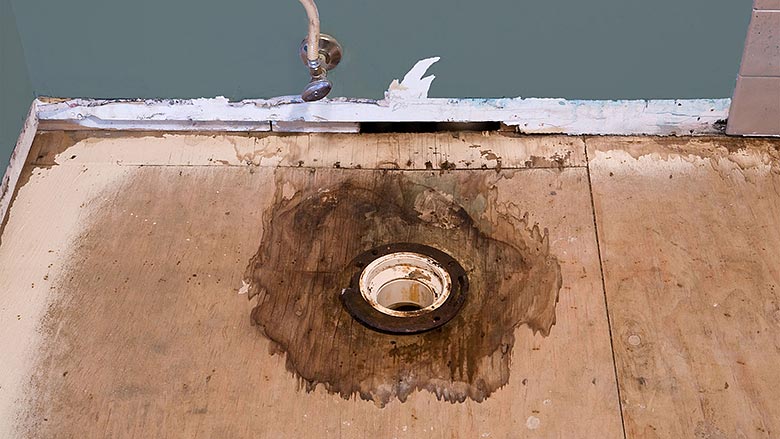Avoiding Water Damage in the Bathroom
Avoiding Water Damage in the Bathroom
Blog Article
Just how do you actually feel in regards to Preventing Water Damage in the Bathroom?

The bathroom is very vulnerable for damp build-up and possible water damage because of the constant use of water in it. This post offers basic inspection methods to assist identifying water damage dangers.
The constant use water in the restroom makes it exceptionally vulnerable for damp buildup and prospective water damage. By evaluating it regularly, you can decrease water relevant problems.
The complying with collection of evaluations is simple to do as well as need to be done as soon as in every 3 months in order to keep your shower room healthy and to prevent prospective water problems triggered by the bathtub, the shower, pipe joints as well as plumbing, sinks, cupboards, and also the commode
Do not neglect carrying out these evaluations as well as be complete while executing them. Remember that these simple assessments can conserve you a great deal of money by supplying very early indicators for water damages
Tub and also Shower
The shower and also bath tub call for special interest and also upkeep. Examine the floor tiles and replace if cracked. See to it that there is no missing out on grout between the ceramic tiles. Evaluate and also change split caulking at joints where the wall surfaces satisfy the floor or the tub. Blocked drains pipes as well as pipelines issues will prevent the bathtub from drying and also might indicate severe issues underneath the tub. Consult with a specialist immediately to prevent architectural damages. Take note of discolorations or soft locations around the bath tub walls as they may suggest an internal leak.
Plumbing
Signs for water damage are hard to detect since the majority of pipelines are installed inside the wall surfaces.
Pay special attention to flooring and walls moisture and also discolorations as they may suggest an unnoticeable plumbing problem. Check dampness degrees in adjacent spaces also.
Sinks as well as Cabinets
Sinks and cabinets are revealed to dampness as well as humidity daily and also are typically neglected. Examine routinely under the sink and also on the kitchen counter above it. Repair any kind of drip in the trap as it might recommend drain problems. Look around the sink, slow-moving draining pipes might show a blocked drain. Change sink seals if they are fractured or loosened.
The Bathroom
The toilet is an at risk water joint. Inspect the water lines as well as look for leaks around the toilet seat, in the hose, as well as under the water tank. If you identify any type of signs of dampness on the floor around the toilet, look for leaks in the toilet edge as well as tank seals.
Understand that hanging commode bowl deodorants boosts the chances for obstructions.
TIPS TO PREVENT WATER DAMAGE IN THE BATHROOM
The average household uses approximately 80-100 gallons of water per person per day. For a family of 4, that's almost 2,500 gallons of water a week! The largest portion of this consumption comes from bathroom use. Flushing the toilet uses the most water, followed by taking a shower or bath. With that much water running through the home, water damage in the bathroom is bound to happen. Knowing how to spot signs of a water leak is essential to preventing long-term damage. This guide provides you with tips to reduce the impact of water damage on your bathroom.
CAUSES OF BATHROOM WATER DAMAGE
Pipe breaks are the most common cause of water damage we see in our daily jobs. The age of a pipe plays a large role in a pipe break as well as corrosion. Over time, the metal begins to break down, allowing water to escape. Frozen pipe breaks are also a concern in the winter months. Toilet overflows caused by paper products or children flushing inappropriate items. Degraded caulking around the toilet or bathtub can allow water seepage, sometimes behind the fixture, into the subfloor or walls. Condensation forms when the water in a pipe is cooler than the air temperature. Beads of water form on the exterior of the pipes, sometimes so much so that the water begins to drip and pool below. Sink or shower backups created by poor drainage. HOW TO PREVENT WATER DAMAGE IN YOUR BATHROOM
Inspect your toilet supply line for worn or frayed hoses and replace them as needed. Winterize your plumbing to prevent a frozen pipe break. Use vent fans to prevent condensation that can lead to mold growth. Routinely check and replace degraded caulking around your toilet or bathtub. Increase the temperature in your toilet tank and insulate your pipes during the warm summer months to keep condensation from forming. Use child safety locks on the toilets. Flush only toilet paper. "Flushable" wet wipes are actually not good for your plumbing system. Additionally, feminine hygiene products should not be flushed. Prevent water from escaping the tub or shower. Make sure shower curtains are in good condition. Inspect shower doors and replace the seal strip if necessary. Wipe up any water that accumulates on the floor and use bath mats. Water left to sit can cause damage to the tiles and flooring. Refrain from using bath products containing heavy oils to avoid a clogged drain.

Hopefully you enjoyed our section about How to Fix a Water Damage Bathroom. Thanks for taking the time to read through our posting. Those who appreciated our post kindly remember to share it. I treasure reading our article about Preventing Water Damage in the Bathroom.
Visit Report this page